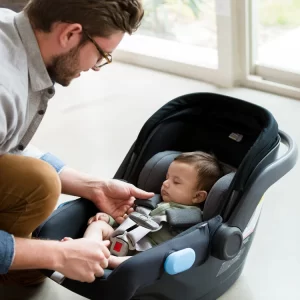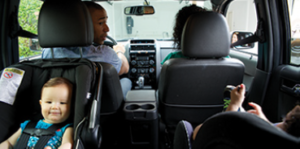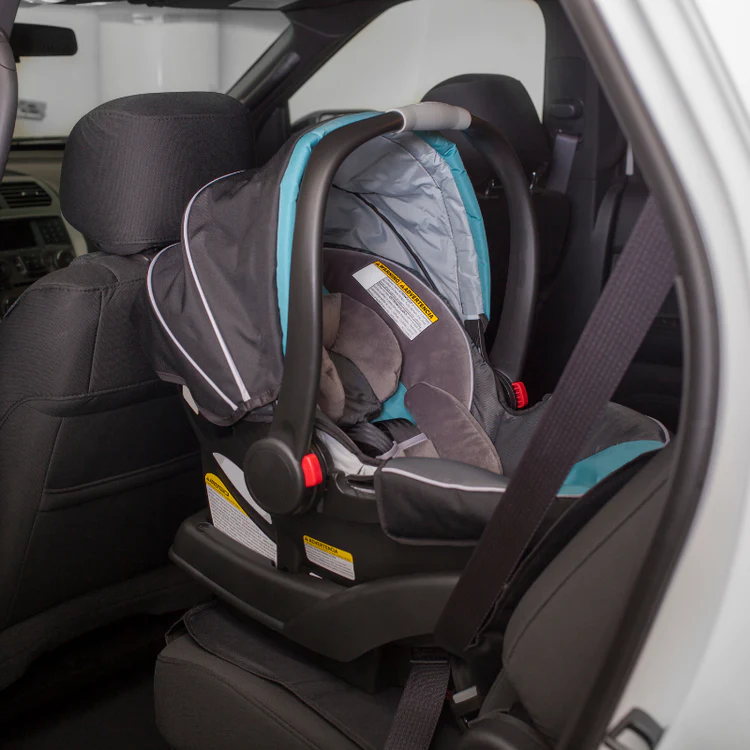Greetings to my dedicated parents reading this,
In a recent eye-opening experience following my arrival in Canada, I was profoundly impacted by a significant observation. In the picturesque city of Gatineau, Quebec, I had the privilege of witnessing midwives assisting parents with their newborns, ensuring the correct installation and use of the baby’s car seat. The message was clear: without a properly installed safety seat, the family couldn’t take their baby home.
While this rigorous safety measure is a standard practice in Canada, it sharply contrasts with practices in many places I’ve lived. In several countries across Asia and Africa, the significance of child safety seats is not as deeply ingrained, potentially exposing young passengers to risks.
Understanding the life-saving importance of child car seats, I was compelled to delve deeper, especially considering alarming statistics such as those reported by the American CDC in 2020 alone, where 607 children under 12 lost their lives in motor vehicle crashes, with a startling 38% not properly restrained.
Here’s my comprehensive breakdown of why child car seats are indispensable:
Protection in Accidents
Any unforeseen collision or abrupt halt can be catastrophic. Child car seats, with their meticulous design, drastically reduce injury risks during such incidents. For example, without proper restraint, whiplash—a common car injury—can severely affect children.
Age-Appropriate Support
Catering to various growth phases, child car seats range from rear-facing ones for infants to booster seats for older children, ensuring tailored protection at every stage.
Proper Restraint System
These seats are equipped with harnesses that distribute impact force, minimizing injury risks. Proper installation, using vehicle belts or the LATCH system, is vital. In the U.S., organizations like NHTSA offer resources to aid proper car seat installation.
Mitigating Head and Neck Impact
Due to children’s proportionately larger head sizes, they are at a heightened risk of head and neck injuries. Car seats, with their specialized design, reduce this risk significantly. The American Academy of Pediatrics suggests that proper car seat usage can reduce fatalities in infants by 71% and toddlers by 54%.
Compliance with Legal Requirements
Beyond safety, in many places, child car seats are legally mandated. In Canada, for instance, regulations dictate specific age, height, and weight thresholds for car seat and booster seat usage.
Peace of Mind
A properly restrained child means you can drive with fewer worries and greater focus.
Minimizing Distractions
Secured children are less likely to move around or engage in potentially distracting behaviors, ensuring a safer drive.
Setting a Lifelong Safety Standard
By regularly using child car seats and emphasizing road safety, you instill essential safety habits in your child.
Having highlighted these critical benefits, I feel compelled to share deeper research on some unsettling trends, including correlations between factors like ethnicity, rural residence, and impaired driving, and the non-use or misuse of car seats. These insights underscore the urgency to ensure every child, regardless of background, benefits from optimal car safety standards.
Recent U.S. data from 2015-2019 shows that American Indian, Alaska Native, and Black children are at a higher risk of fatal injuries in car crashes compared to White children. Additionally, there is a significant difference in the use of car seats or seatbelts among these racial groups, with a higher percentage of Black children not using them properly compared to Hispanic and White children.
Also, Some available research and data show that child safety in cars is a bigger concern in rural areas compared to urban areas. Children in rural areas were at a significantly higher risk of being in car accidents and not using the right safety measures (like car seats or seatbelts) compared to children in cities and towns.
Impact of Alcohol-impaired Driving
Alcohol-related cases have far-reaching consequences. In 2020, a concerning 24% of child passenger deaths (ages 14 and below) were linked to alcohol-impaired drivers. The connection between driver alcohol consumption and child restraint use is evident, as studies show.
These findings point to a broader socio-economic commentary. It may seem that educational levels and socio-economic status influence car seat usage, especially given the racial and regional disparities mentioned. However, the issue of alcohol-impaired driving appears to cut across all socio-economic layers.
Remarkably, this isn’t solely an American concern. In regions like Africa, parts of Asia, and the Middle East, the absence of child car seat usage transcends economic or educational boundaries. Even affluent and highly educated individuals in these regions often neglect this essential safety measure.
Ensuring the safety of our children on the roads is a global responsibility, one that transcends race, geography, and socio-economic status.
After spending a significant part of my life in Africa, I distinctly remember obtaining my driving license there a quarter-century ago. Surprisingly, the topic of child car seats never came up. The focus of road safety campaigns predominantly sidelined the essential utility of these seats, leaving the majority unaware of their importance.
In all my years driving with my young children seated in the back like adults, not once did a law enforcement officer flag this as an issue or concern. This might lead one to ponder: Are regulations in North American or European regions too strict when it comes to the use of child car seats?
Given the notable dependence on public transport in many countries, one might argue that the pressing need for child car seats becomes diminished. However, does poverty or the predominance of public transport genuinely justify overlooking our children’s safety in personal vehicles?
In wrapping up this reflection, it’s undeniable that child car seats serve as lifelines on the road. These seats are more than just protective gear; they epitomize a parent’s unwavering commitment to their child’s well-being. As we encourage the adoption of secure transportation practices, it’s crucial to ask: Are these child car seats truly accessible and affordable for the global populace?
To all the dedicated parents reading this: what are the norms, challenges, and perceptions surrounding this topic where you live? How does your community or region prioritize child car seat safety, and are there any notable challenges or disparities in usage? Do you think that regulations on child car seat usage should be standardized globally, or should they be adapted to suit different regions and circumstances?
I encourage you to share your comments with us and also to visit our resources and tools section. If there are other safety topics you’d like highlighted in this space, please suggest them as we’re all trying for a safer world for our cherished little ones.
References
https://www.cdc.gov/transportationsafety/child_passenger_safety/cps-factsheet.html
https://publications.aap.org/pediatrics/article/142/5/e20182460/38530/Child-Passenger-Safety
https://pubmed.ncbi.nlm.nih.gov/35809653/
https://www.sciencedirect.com/science/article/pii/S2095756423000764

8 Comments
Your comment is awaiting moderation.
https://shorturl.fm/MVjF1
Your comment is awaiting moderation.
https://shorturl.fm/hevfE
Your comment is awaiting moderation.
https://shorturl.fm/JtG9d
Your comment is awaiting moderation.
https://shorturl.fm/hevfE
Your comment is awaiting moderation.
https://shorturl.fm/VeYJe
Your comment is awaiting moderation.
https://shorturl.fm/IPXDm
Your comment is awaiting moderation.
https://shorturl.fm/Kp34g
Your comment is awaiting moderation.
https://shorturl.fm/JtG9d
Your comment is awaiting moderation.
https://shorturl.fm/Xect5
Your comment is awaiting moderation.
https://shorturl.fm/ypgnt
Your comment is awaiting moderation.
https://shorturl.fm/9fnIC
Your comment is awaiting moderation.
https://shorturl.fm/FIJkD
Your comment is awaiting moderation.
https://shorturl.fm/N6nl1
Your comment is awaiting moderation.
https://shorturl.fm/TbTre
Your comment is awaiting moderation.
https://shorturl.fm/6539m
Your comment is awaiting moderation.
https://shorturl.fm/FIJkD
Your comment is awaiting moderation.
https://shorturl.fm/68Y8V
Your comment is awaiting moderation.
https://shorturl.fm/YvSxU
Your comment is awaiting moderation.
https://shorturl.fm/FIJkD
Your comment is awaiting moderation.
https://shorturl.fm/6539m
Your comment is awaiting moderation.
https://shorturl.fm/bODKa
Your comment is awaiting moderation.
https://shorturl.fm/N6nl1
Your comment is awaiting moderation.
https://shorturl.fm/A5ni8
Your comment is awaiting moderation.
https://shorturl.fm/N6nl1
Your comment is awaiting moderation.
https://shorturl.fm/oYjg5
Your comment is awaiting moderation.
Awesome https://is.gd/N1ikS2
Your comment is awaiting moderation.
Good https://t.ly/tndaA
Your comment is awaiting moderation.
Can I just say what a relief to find someone who actually knows what theyre talking about on the internet. You definitely know how to bring an issue to light and make it important. More people need to read this and understand this side of the story. I cant believe youre not more popular because you definitely have the gift.
La pratique de l’utilisation des sièges auto est un impératif pour la sécurité des enfants. Il faut donc sensibiliser la population à c’est pratique. Pour nous qui sommes dans les quartiers modestes de la côte d’ivoire il faut dire que beaucoup de personnes ne connaissent pas l’importance de cette pratique. Pour ces personnes s’est faire le malin. Pour moi elle devrait être adaptée aux différentes régions
Pour moi l’utilisation des sièges auto est un impératif pour la sécurité de enfants. Une période de sensibilisation à cette pratique devrait avoir lieu dans nos pays africains. Pour nous qui vivons dans les quartiers modeste de la côte d’ivoire il faut noter que peu de personnes ont des véhicules et parmi eux beaucoup ne connaissent pas l’importance de l’utilisation des sièges auto. Pour beaucoup d’entre eux c’est réservé aux personnes d’une certaine classe. Dites ( bourgeoise)
Je pense qu’elle devrait être adapté aux différentes régions et circonstances.
Le problème est que cela ne fait même pas partie des préoccupations des autorités du transport et du gouvernement. Aucune mention dans les auto écoles ni dans les campagnes de sécurité routière. Même les personnes aisées financièrement et pouvant les acheter ignorent leur importance et même leur existence.
Pour moi l’utilisation des sièges auto est un impératif pour la sécurité de enfants. Une période de sensibilisation à cette pratique devrait avoir lieu dans nos pays africains. Pour nous qui vivons dans les quartiers modeste de la côte d’ivoire il faut noter que peu de personnes ont des véhicules et parmi eux beaucoup ne connaissent pas l’importance de l’utilisation des sièges auto. Pour beaucoup d’entre eux c’est réservé aux personnes d’une certaine classe. Dites ( bourgeoise)
Je pense qu’elle devrait être adapté aux différentes régions et circonstances.
Nos gouvernements d’Afrique seront ils prêts à subventionner l’offre de siège auto pour parents possédant un véhicule a la sortie de la maternité ?
Il est vrai que le prix pourrait être un obstacle à la généralisation, mais il faut d’abord en faire l’existence même aux autorités du transport et du gouvernement.
Je trouve le contenue intéressant. J’espère que ce message touchera la zone Afrique où ce sujet n’est pas du tout à l’ordre du jour.
Bien dit Marie. J’espère que les discussions sur ce blog et vos contributions aideront à attirer l’attention. Car mine de rien c’est tout de même un outil pour la sécurité des enfants en voiture.